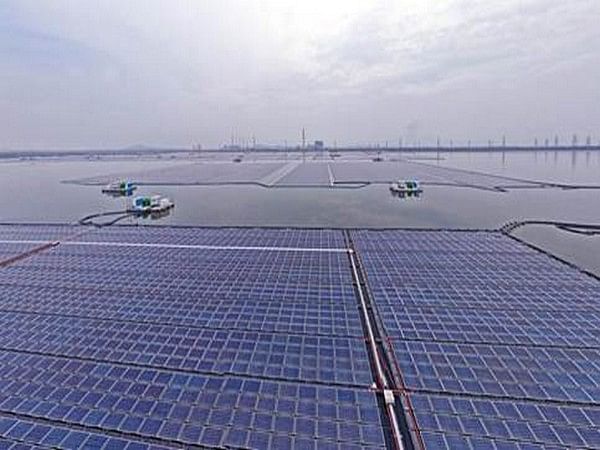New Delhi [India], July 2 (ANI): India’s largest floating solar power project is now fully operational. NTPC declared commercial operation of the final part capacity of 20 MW out of 100 MW Ramagundam Floating Solar PV Project at Ramagundam, Telangana with effect from July 1.
With the operationalisation of 100-MW Solar PV Project at Ramagundam, the total commercial operation of floating solar capacity in the Southern Region rose to 217 MW. Earlier, NTPC declared commercial operation of 92 MW Floating Solar at Kayamkulam (Kerala) and 25 MW Floating Solar at Simhadri (Andhra Pradesh).
With the operationalisation of 100-MW Solar PV Project at Ramagundam, total commercial operation of floating solar capacity in Southern Region rose to 217 MW. Earlier, NTPC declared commercial operation of 92 MW Floating Solar at Kayamkulam (Kerala) and 25 MW Floating Solar at Simhadri (Andhra Pradesh).
The 100-MW Floating Solar project at Ramagundam is endowed with advanced technology as well as environment-friendly features.
Constructed with a financial implication of R. 423 crore, the project spreads over 500 acres of its reservoir.
An official release said that with the presence of floating solar panels, the evaporation rate from water bodies is reduced, thus helping in water conservation.
Approximately 32.5 lakh cubic meters per year water evaporation can be avoided. The water body underneath the solar modules helps in maintaining their ambient temperature, thereby improving their efficiency and generation.
Similarly, while coal consumption of 1,65,000 tons can be avoided per year, Co2 emission of 2,10,000 tons per year can be avoided,” it added. (ANI)
This report is auto-generated from ANI news service. ThePrint holds no responsibility for its content.
